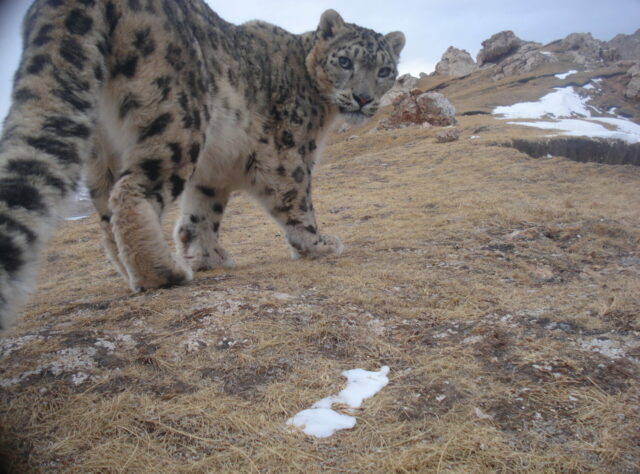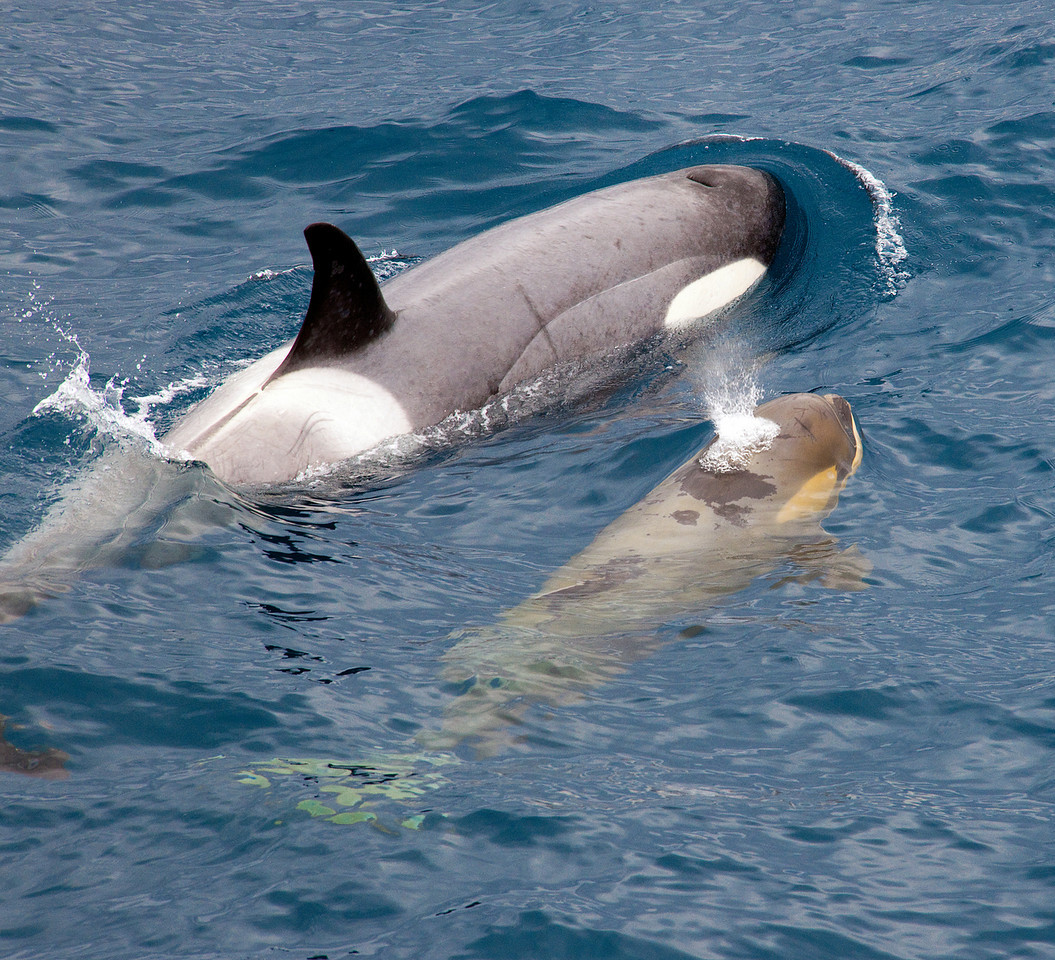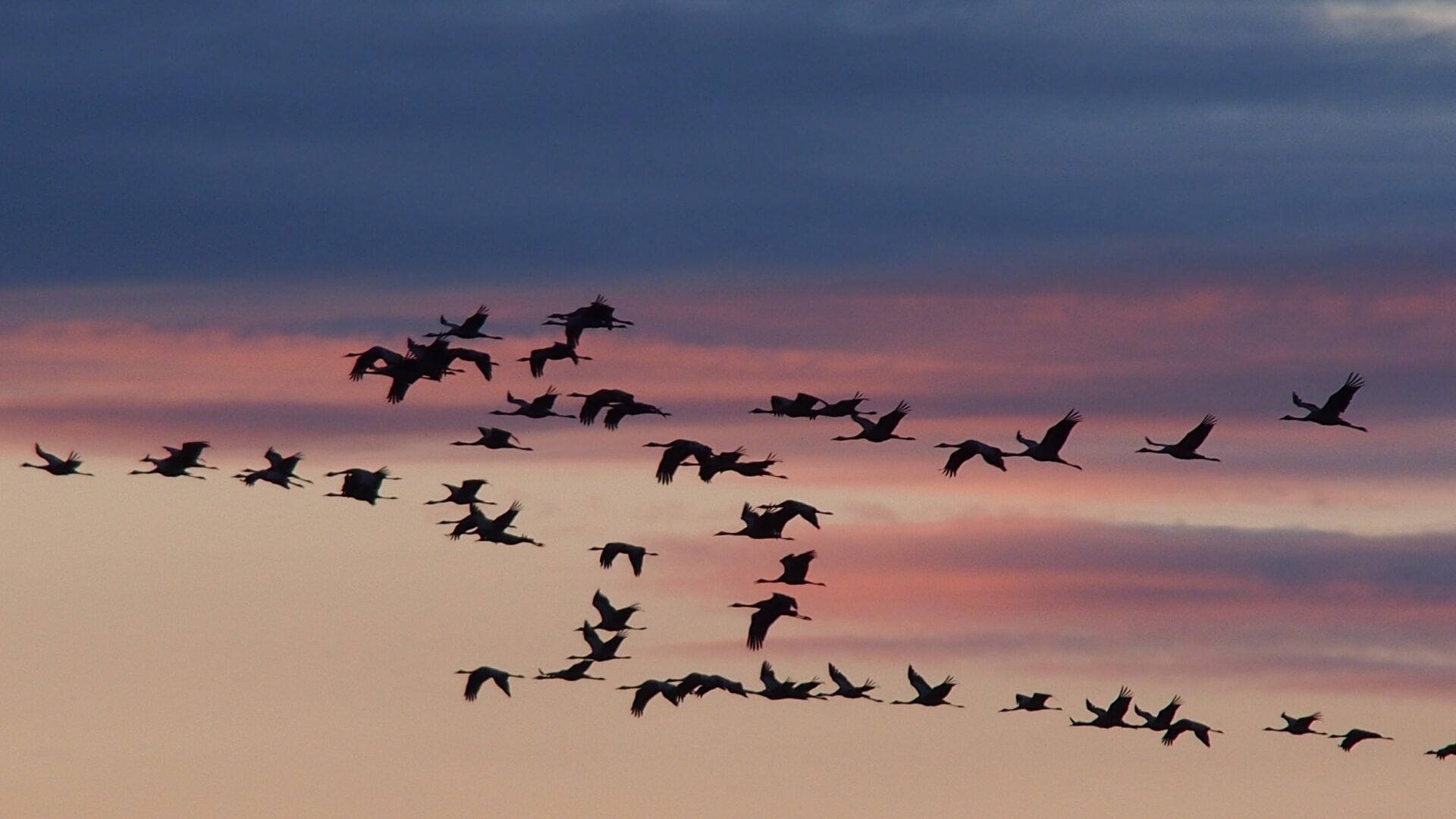
Migratory species such as the Snow Leopard travel thousands of miles, sometimes crossing multiple countries, to reach specific habitats at different times in their lifecycles. Credit: Juan Li, Shansui Conservation Centre, China
Migratory species include some of the most iconic animals on the planet. From elephants roaming savannas, to ocean-crossing orcas, to birds that flock in their thousands, changing hemispheres with the seasons. Down to the smallest insects and pollinators, and even some plants, these travellers connect the planet with their journeys.
Earlier this month, the 14th Conference of the Parties to the Convention on the Conservation of Migratory Species of Wild Animals (CMS COP14) took place to discuss urgent actions needed to support the billions of animals making migratory journeys each year. Representatives from 133 UN member states gathered for the summit in Samarkand, Uzbekistan — the first held in Central Asia. The location itself marks a positive step in addressing the ongoing threats to biodiversity in this part of the world, and will impact countless species, including many of those supported by our partners across Central and East Asia.

Orcas cross vast oceans to find a breeding place and raise their young. Credit: Christopher Michel
To the far side of the world and back
Freedom of movement across land, sea, and sky for migratory species is crucial for the planet’s biodiversity. They keep ecosystems balanced by transferring nutrients, controlling pests, pollinating, and helping to store carbon. Yet CMS COP14’s landmark new report on the state of the world’s migratory species found that the world’s migratory wildlife is declining, primarily because of human over-exploitation and habitat loss and degradation, and more must be done to stop extinction risks rising. Delegates at the summit concluded that protection for species that regularly traverse national and international borders will mean working collectively to defend their habitats on a global scale.
Amy Fraenkel, CMS Executive Secretary, said: “Migratory species rely on a variety of specific habitats at different times in their lifecycles. They regularly travel, sometimes thousands of miles, to reach these places. They face enormous challenges and threats along the way, as well at their destinations where they breed or feed. When species cross national borders, their survival depends on the efforts of all countries in which they are found. This landmark report will help underpin much-needed policy actions to ensure that migratory species continue to thrive around the world.”

Jaguars’ natural home range extends across 10 countries; manmade borders threaten their connectivity, habitat, and safety. Credit: Martin Schaefer / Fundación Jocotoco
What does CMS COP14 mean for the future of migratory wildlife?
For us at WLT, the 14 species added to the CMS appendices are a hopeful milestone that will mean priority conservation for several species in our partner’s reserves. These include the Eurasian Lynx, supported both by FPWC in Armenia’s Caucasus Wildlife Reserve, and in the Bashqar Gol Biosphere Reserve our partner Snow Leopard Foundation is working to form in Pakistan. The Guanaco, found in Estancia la Esperanza- the world’s first Guanaco Refuge, created as a result of our partnership with Fundación Patagonia Natural, was also among the new additions. And these were not the only key breakthrough of the summit:
The Transboundary Jaguar Initiative-
Seven of the ten states and countries in which Jaguars have a natural home range have agreed to work together to combat the Jaguar’s main threats of habitat destruction, loss of connectivity, human-wildlife conflict, and poaching.
The advancement of the joint CITIES-CMS African Carnivores Initiative-
This initiative will increase its existing efforts for the conservation of Lions, Leopards, Cheetahs, and African Wild Dogs as flagship species of African wildlife.
The Global Snow Leopard and Ecosystem Protection Programme (GSLEP) Steering Committee-
An international effort, first agreed in 2013, to save the snow leopard and conserve high-mountain ecosystems will be given higher priority and push forward with actions to further combat human-wildlife conflict and preserve biological mountain corridors.
Initiative for the Central Asian Flyway-
Supported by Birdlife International, this new initiative will improve the ecological connectivity of more than 600 species of migratory birds in the flyway— an aerial corridor that stretches across 30 countries from Siberia all the way to the Maldives.
Global Partnership on Ecological Connectivity (GPEC)-
To address the increasing habitat loss faced by so many species, the GPEC will work to ensure that key areas for migratory species are identified, protected and connected.

Around 1,800 of the world’s more than 10,000 bird species are long-distance migrants, guided by winds, temperature, and the earth’s magnetic poles. Image: pxhere
Action is needed more than promises
But will it be enough? The CMS report found that many of the species in the treaty have been protected in name but not in practice. Though the conservation status of 14 CMS-listed migratory species has improved over the last 30 years, 70 have become more endangered. What’s more, the report also noted that almost 400 migratory species are entirely missing from the convention, and therefore don’t benefit from the treaty’s protective measures.
We know that, while an important step, simply classifying a species as protected is not enough to prevent its decline. Above all else, these species need undamaged, undisturbed habitat to travel to, from, and through. Borders, whether between vast countries or small farms, should not prevent wildlife from taking its natural course.
More than half of the world’s nearly 10,000 Key Biodiversity Areas act as crucial breeding, feeding, and stopover sites for migratory species, yet are not designated as areas for conservation. Mapping and protecting these sites, as the CMS report suggests, will be an effective step in safeguarding these species. For nature to thrive, no matter the range, it needs protected land, active restoration, and rangers trained in everything from taking down fences to providing education on the importance of conservation. Ambitious goals have been set by CMS COP14 and they can be reached through the action of dedicated organisations like our partners and the generous donors who help us support their work.
Read more about how you can support the work of our partners through our Action Fund.

